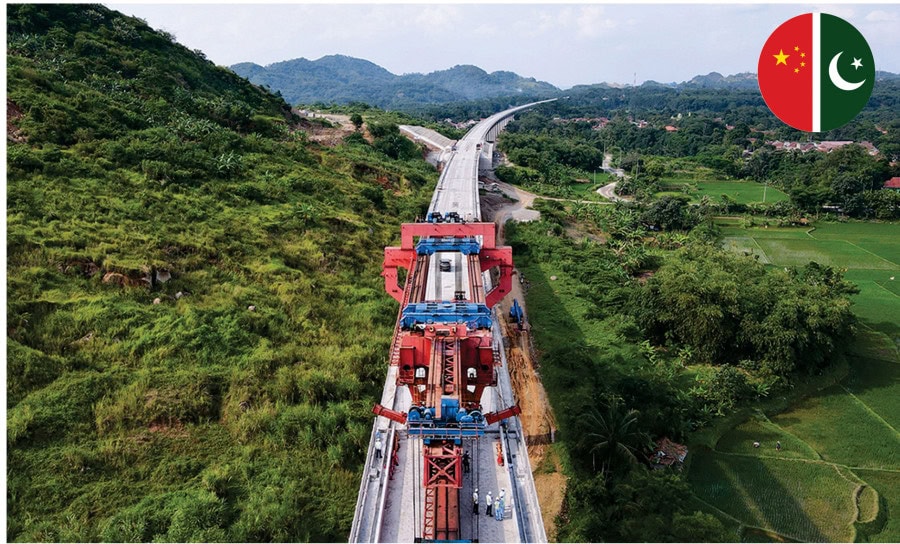The Chinese Two Sessions have presented the Government Working Report (GWR) highlighting economic performance of 2024 and future strategies of 2025 vividly reflecting its economic resilience, exports diversification, green transformation, qualitative industrialization, openness and modernization through quality development, digitalization, artificial intelligence and robotic industries.
Moreover, it also clearly demonstrated the vital role of the BRI further enhancing its export volumes, trans-regional connectivity, investments and green technologies global outreach.
Interestingly, at the just concluded local two sessions in various provinces, autonomous regions and municipalities, development of the BRI dubbed as vital and remained an important work focus in local government work reports for the year 2025 showing its immense recognition, acceptability, scope, utility, and importance for their economies, industries, societies and manufacturing capacities through bigger connectivity.
Various regions have proposed deeper cooperation in transportation, logistics, trade, energy, renewables, food and cultural exchanges with BRI-participating countries, aiming for high-level economic growth and opening-up.
Provincial governments have developed a comprehensive roadmap for BRI’s 2025 development, building on recent cooperative experiences.
Many regions have prioritized enhancing connectivity through improved policy coordination, infrastructure, trade, financial integration and cultural exchanges, setting a strong foundation for further collaboration in new fields.
In the fields of infrastructure, Southwest China’s Chongqing Municipality specifically mentioned in its government work report planning to accelerate the development of the New International Land-Sea Trade Corridor, while ensuring the consistent operation of “China-Laos-Thailand” train services and promoting the China-Singapore (Chongqing) Demonstration Initiative on Strategic Connectivity.
Moreover, the New International Land-Sea Trade Corridor is a key logistics network connecting China’s western regions to global markets.
According to Chinese official reports, it has expanded its reach to 555 ports in 127 countries and regions till today thus it has become the strategic connecting hub in the western regions.
On the other hand, Southwest China’s Guizhou Province aims to enhance BRI development by expanding its international reach, particularly focusing on Southeast, South, and Central Asia.
The province plans to establish a key international freight hub in southwestern China, improving train operations along the New International Land-Sea Trade Corridor, China-Europe (Central Asia) Railway Express, and China-Laos Railway.
Guizhou also intends to restore or add 15 international and regional passenger routes, further boosting rail and sea connectivity in 2025 and beyond.
Moreover, South China’s Guangxi Zhuang Autonomous Region has certain plans to enhance the quality and operational efficiency of the New International Land-Sea Trade Corridor, with particular emphasis on the construction of the Pinglu Canal, a flagship project under the corridor.
Obviously, the Pinglu Canal links the Xijiang River’s main stream to Guangxi’s Beibu Gulf international hub ports.
Hopefully, after its completion, it will provide the shortest, most cost-effective and convenient sea-going waterway in southwestern China.
The project is scheduled to start operation by 2026, marking 2025 as a pivotal year for construction, with a planned investment of 17 billion Yuan (US$2.3 billion).
Furthermore, the project will accommodate the direct shipment of goods from Guangxi and Southwest China’s Yunnan and Guizhou to sea ports through river systems, becoming a convenient and cost-effective passage to ASEAN members.
Northwest China’s Xinjiang Uygur Autonomous Region plans to upgrade the Kashgar Economic Development Zone and Horgos Port while building a comprehensive international aviation hub to strengthen economic and trade ties with Central Asia.
Meanwhile, in easternmost Jilin, the border city of Hunchun, which connects China with Russia and the Democratic People’s Republic of Korea, has seen a significant increase in freight volume through China-Europe freight trains and the China-Russia railway in recent years.
According to GWR of East China’s Fujian Province it will focus on promoting the construction of the core area of the 21st Century Maritime Silk Road, improving maritime shipping capacity and strengthening economic and trade exchanges with ASEAN members.
East China’s Zhejiang Province intentionally prioritizes high-quality services in its BRI development.
It will develop a high-standard commodity resource allocation hub, and will attract service institutions such as maritime law agencies and classification societies.
It is a healthy indicator that Shanghai also intends to expedite the development of the Silk Road E-commerce Cooperation Pilot Zone while enhancing the comprehensive overseas service system.
It plans to introduce a global science and technology partnership initiative and establish additional Belt and Road joint laboratories.
In summary the provincial GWRs vividly reflect utmost policy confidence, structural reforms consistence, economic & financial contingence, future counter measures and last but not least, strategic vision of the leadership gearing the macro-economy/local economies, industries, manufacturing production hubs, exports, towards high development through further deepening of structural reforms, opening-up, stability and sustainability during 2025 and beyond in which the role of the BRI is essential and permanent.
Since the BRI was proposed by China in 2013, it has been a cornerstone of government work reports in various regions.
The Central Economic Work Conference held in December 2024 which decided priorities for the economic work in 2025, also urged solid progress in high-quality BRI cooperation and improvement in the overseas comprehensive service system.
In 2025, China’s commitment to high-quality Belt and Road cooperation will not waver, and the principle of seeking the greatest common denominator for cooperation with other countries will remain unchanged.
The significant contribution of BRI to the world lies in China offering a widely applicable development model and reference for numerous developing countries.
It is crystal clear that the BRI fosters economic growth across member countries, bridging the gap with developed nations, particularly in technology, where the principle of shared development has been crucial.
China shares development opportunities globally, explores new paths for common progress and achieves mutual benefits and win-win outcomes.
Its integrated policies, plans and projects, along with its commitment to multilateralism and an open world economy, have set an example for the international community, providing strong support for global cooperation.
Moving forward, Chinese policymakers should prioritize quality development, qualitative industrial cooperation, digitalization, modernization, hybrid agriculture, green cooperation and local community empowerment under the BRI flagship during 2025 and beyond.


















